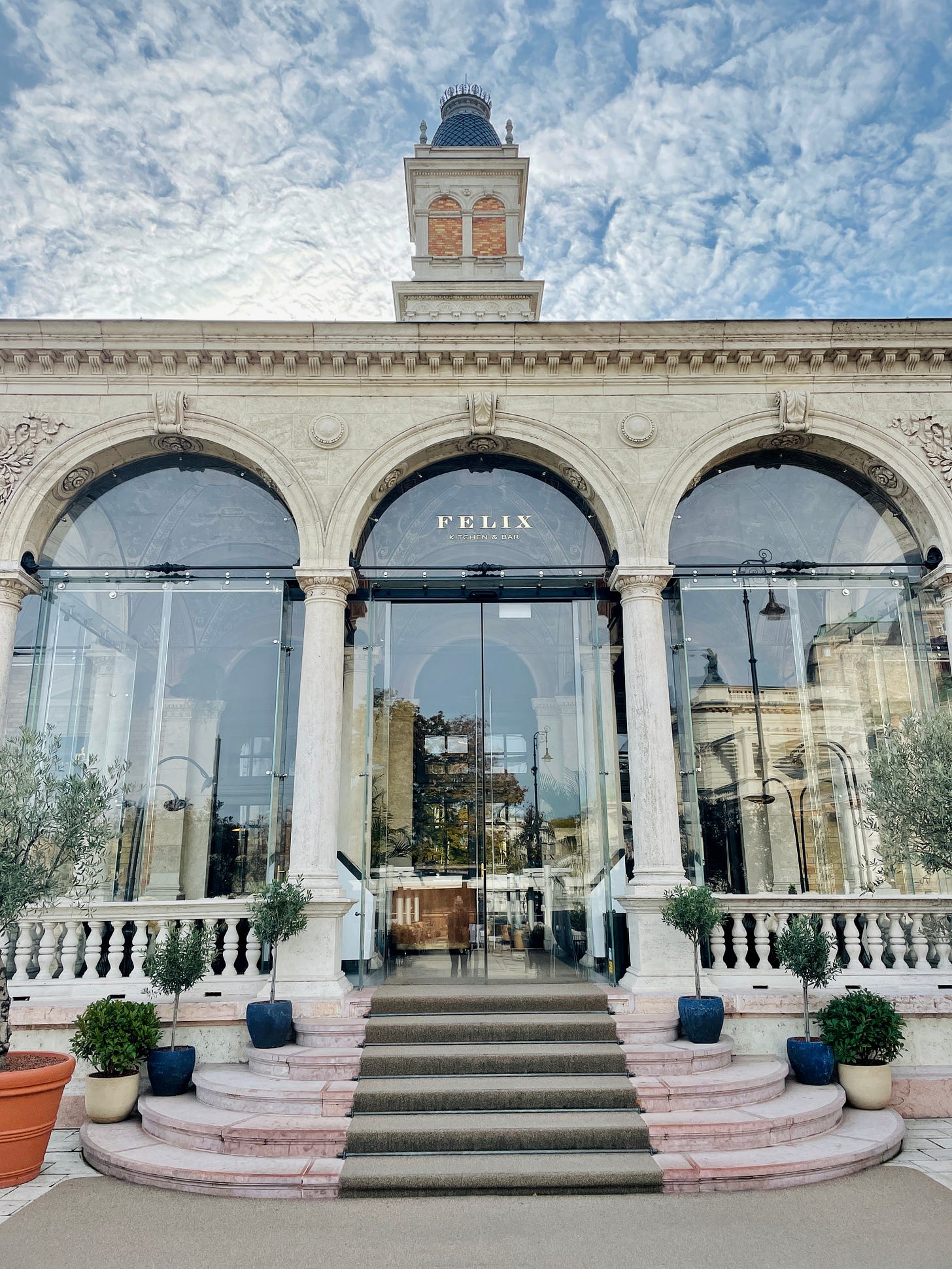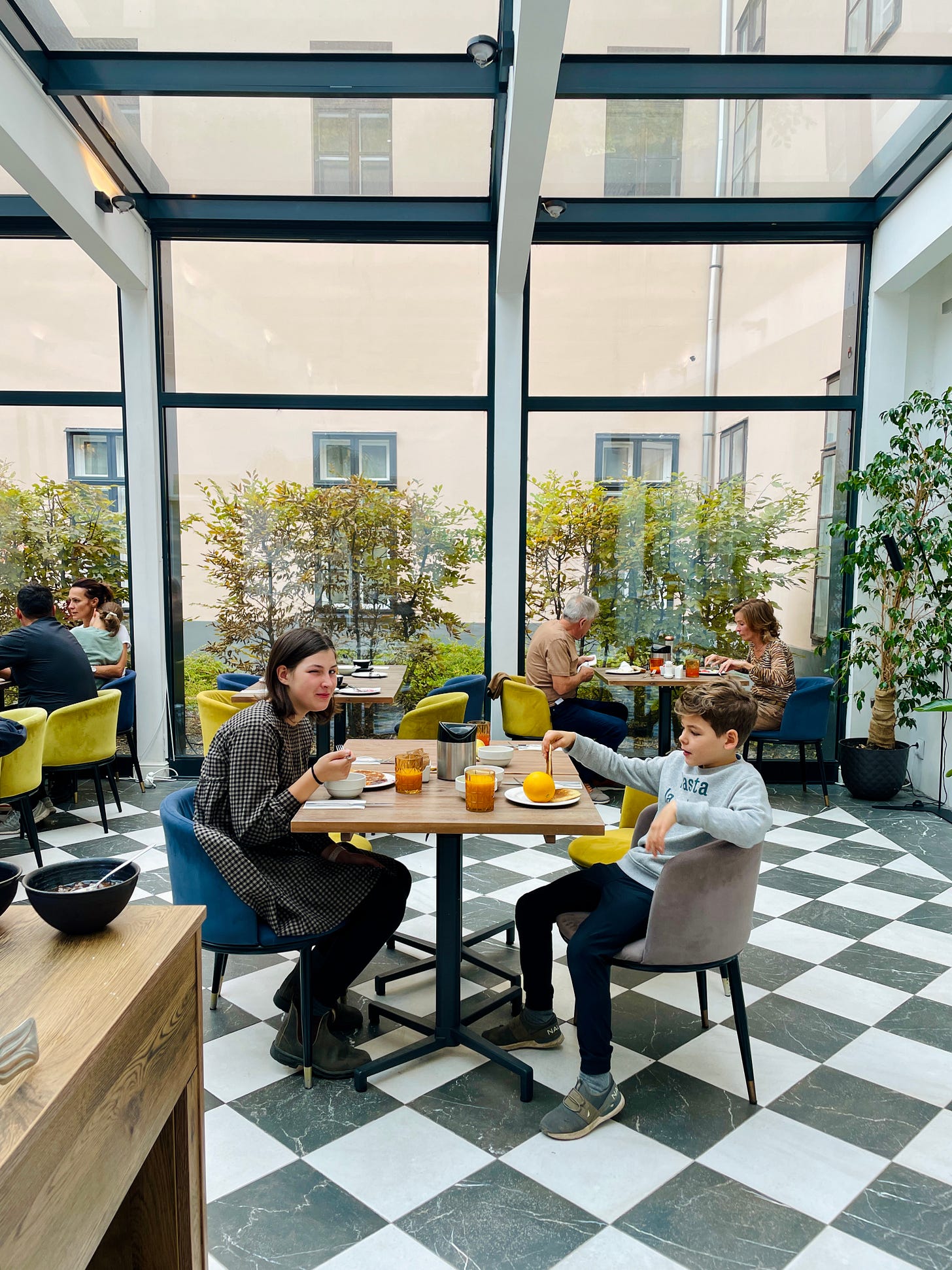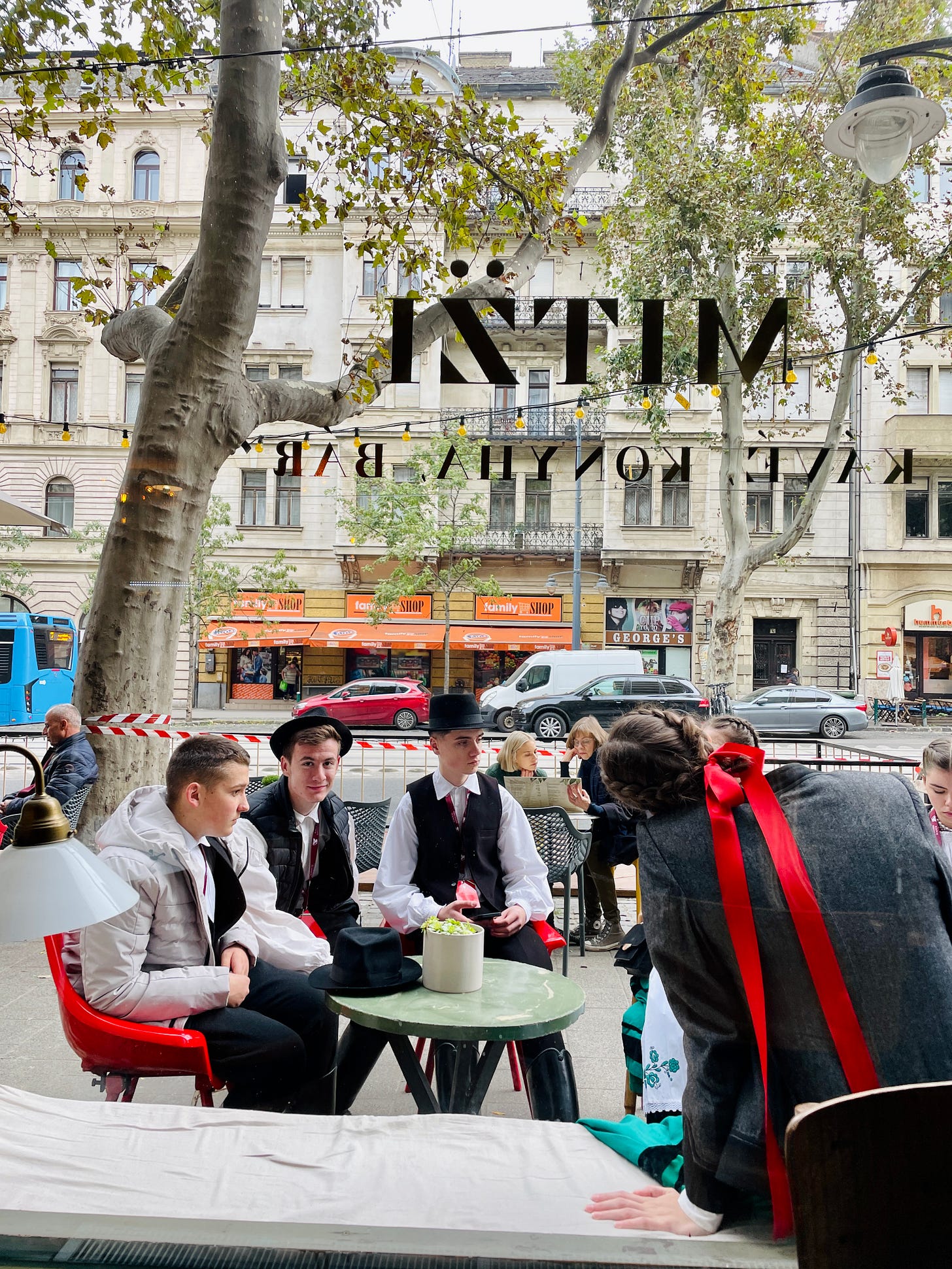Welcome! This is a reader-supported site—your support helps keep this space thriving. For full-access to all travel guides, recipes and archives, upgrade to paid. Other ways to show support—buy my books and forward this post to a friend. ♡
Hello,
I hope you are all staying well and safe. It’s been a trying couple of weeks in the world; excuse my absence, as I have felt the need to shift my energy to the urgent need in Israel and Gaza. There are no words for the suffering and sadness, the loss of homes and lives. My heart aches; I imagine yours does, too.
I’ve found myself looking back on happier times this week and trying to muster the joy and elation of travel—the hope that we will all be able to safely embrace the connection that comes from leaving our own worlds. Seeing things from new perspectives is imperative for understanding and empathy.
This weekend last year, the kids and I spent a long, glorious weekend in Budapest.
It’s strange to know a country so well but to have largely avoided its biggest, most famous, and vitally important city. But when Hungary was the home base for the kids and me for many months, after many weeks of school and routine, the 1.5-hour trip from our village to Budapest started to feel like something I could and should do more frequently—even without Andras.
Budapest—Hungary’s capital—has always symbolized our entrée to our annual trips to Hungary. It is where we fly in and out of New York (alternating with Vienna—depending on which city has the cheapest direct flight each year). While we’ve spent several lovely weekends in Budapest over the last decade, and we have many friends who call it home—too often, we skip it, preferring our quiet country routines.
Andras and his dad lived in Budapest in their 20s (respectively), so our previous trips there have been mostly a reliving of Andras’ past life—his favorite bathhouse, coffee shops, and the routes he ran while training for the Budapest and Rome marathons.
I have a different (more indulgent leaning) way of doing things, so on the third week of October, Mátyás, Greta, and I started building our own relationship with their father’s fair city. We drove into the very center of town (daring), parked outside our hotel (surprisingly not difficult), and spent three glorious days living in Budapest—like tourists. We visited the Museum of Fine Arts, rode the Budapest Ferris Wheel (pure joy!), spent a day at my favorite bathhouse—rather than Andras’s, took taxis, ate way too many pastries, and stopped in every cafe our budget would allow—sometimes at spots preferred by locals, and just as often at a must-see tourist spot, including the famed New York Cafe (and yes—like tourists—we stood in the crazy long line to get in).
There are many things to love about Budapest, but three things that I fell for more deeply on this trip will keep me coming back: the architecture, the cafe or kávéház culture, and the ease of public transportation. One of the most glorious things about traveling to Budapest—besides the fairy-tale-like architecture and hours spent savoring an espresso and a plate of strudel— is how easy it is to hop on the (very clean!) tram and whiz just about anywhere, including across one of the many bridges that cross the Danube (Lance Hid, Erzsebet Hid, Margit Hid, Arpad Hid—just to name a few). With good walking shoes and a tram ticket, you can see a significant portion of the city in three long, full days—though a week is even better.
Below is a sampling of the things we did, saw, and ate in one weekend, with links and a handful of recommendations. But for those interested in traveling to this part of the world (for the first time or again), know this is just scratching the surface. There’s too much for just one post*, but let’s start here:
Budapest, like Paris, is arranged in districts circling out from the city center and surrounding the Danube river, which divides the city into its two parts: Buda and Pest (more about Hungarian history another time). Buda is more hilly (it includes the Budapest Castle, Gellert Hill, Rudas Baths, Gellert Baths, and Mátyás-Templom, among other cultural gems); Pest is generally flat (and includes Parliament, the gorgeous Andrassy Ut, and many of the city’s famed museums, stadiums, and monuments like Hero’s Square).
My quick list of favorites below will take you to both sides of the city, slightly favoring Buda since this is where we stayed, but with a good dose of both.
STAY:
For this trip, we stayed at Monastery Boutique Hotel Budapest on the Buda side, a few minutes walk from The Széchenyi Chain Bridge. The hotel was polished, spacious, extremely comfortable, and centrally located, with plenty of English speakers to help if needed. Besides the ample space and the favorable price tag (the dollar still goes far in Budapest), the big win here was accessible self-parking and the all-inclusive breakfast.
While there are many lovely bakeries, cafes, and increasingly chic brunch spots in Budapest, starting a hefty day of sightseeing with a full tank is a smart idea in this very walkable city. Expect a full European breakfast (eggs, meats, bread, and vegetables), plus porridge, oatmeal, espresso, fresh-squeezed juices, and Hungarian specialties like sausage and strudel). Nearby: The hotel is a 5 minutes walk to Budapest Castle and Castle Hill, a quick tram to Gellert Baths, 1.5 km (easy walk) to St. Stephens Basilica (pictured, top), and 2.8 km (tram or taxi) to Nyugati train station (Budapest’s oldest train station).
Suppose we were coming from other big cities in Europe and wanted an off-the-beaten-trail Budapest experience. In that case, I might stay at this secret BUD hideout in Budapest’s Norforma Nature Reserve. Airbnb also has plenty of modern or historical apartment options to help you stay like a local. Search for those here. And if it were in my budget, my number one Budapest pick would always be the Four Seasons Hotel Gresham Place, which is truly in a league of its own.
EAT:
OLD WORLD OPULENCE // New York Cafe (New York Kávéház).
One of the most beautiful and beloved coffee houses in Europe at the turn of the century, New York Cafe was once the meeting place for some of the most influential writers and editors (elite newspapers were once edited in the upstairs gallery). It was severely beaten and bruised in WWII and only restored to its pre-war glory in 2006. Today, the cafe is filled with tourists and overpriced but beautifully executed classic dishes like goulash and fine pastries. Still, it is worth seeing as a sample of the luxury of the former Austro-Hungarian Empire. The daytime cafe is first come, first serve, with reservations taken after 6 PM.
BEST MACAROONS // Chez Dodo
Hungarian-born, Paris-trained Dóri Szalai creates expertly crafted and inventive macaroons by the hundreds in this sweet shop.
“There is no literature without a Cafe” – Sándor Márai, 20th Century Hungarian writer










